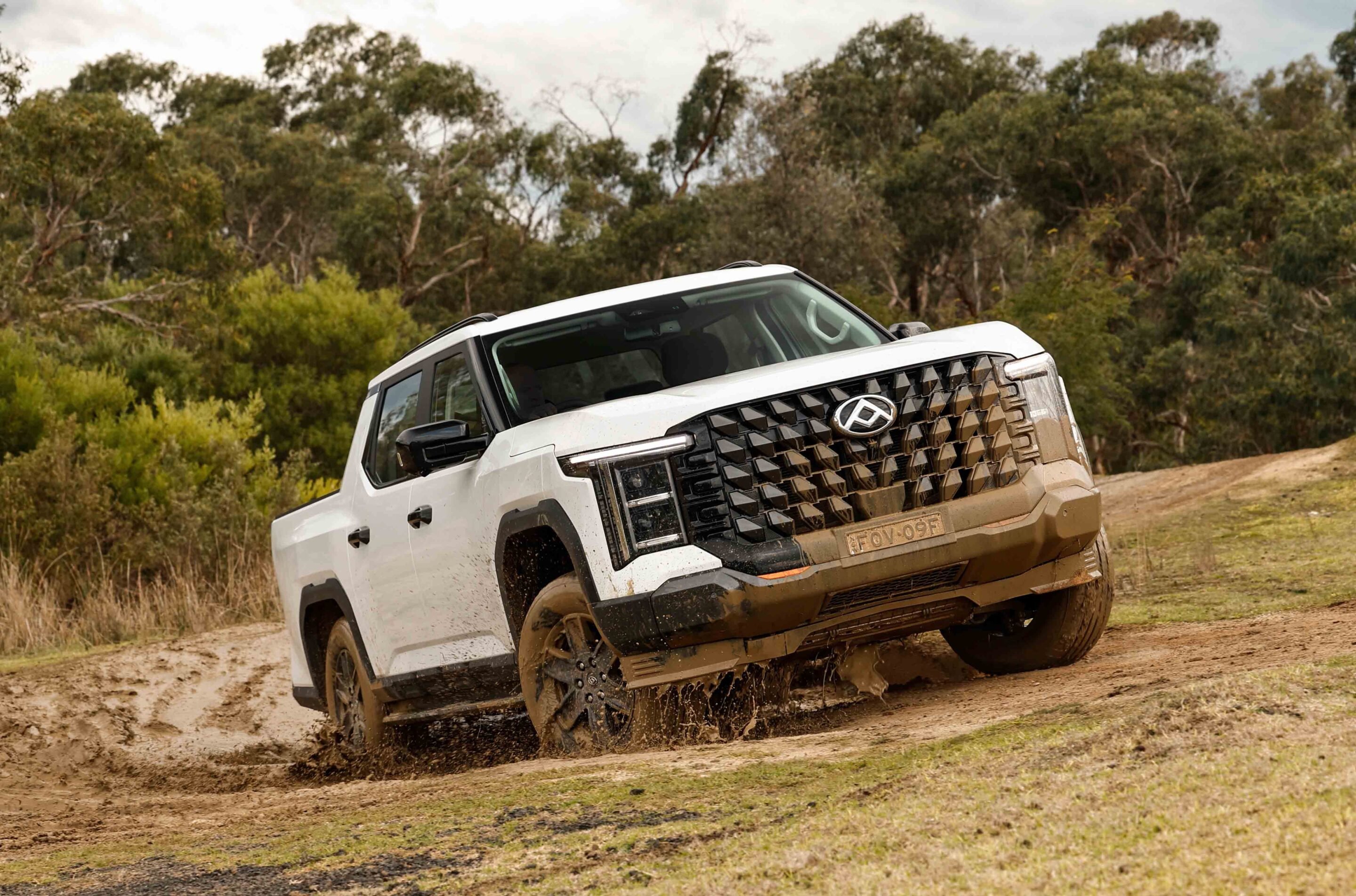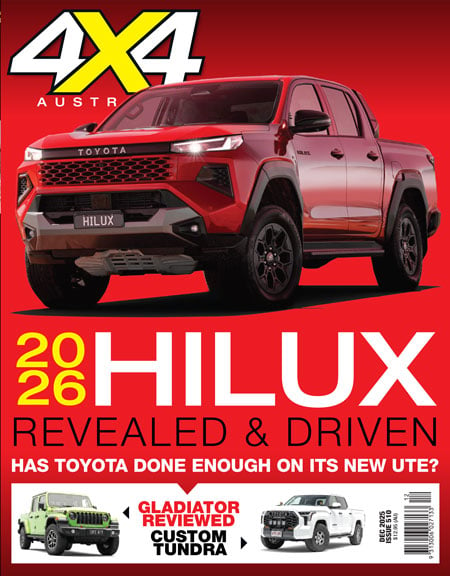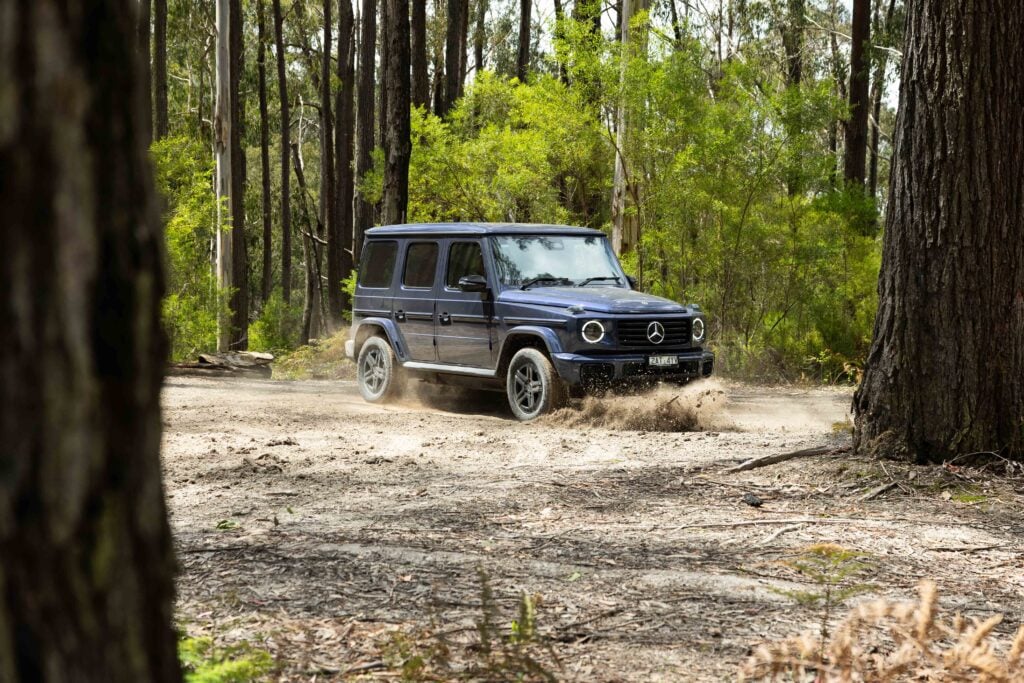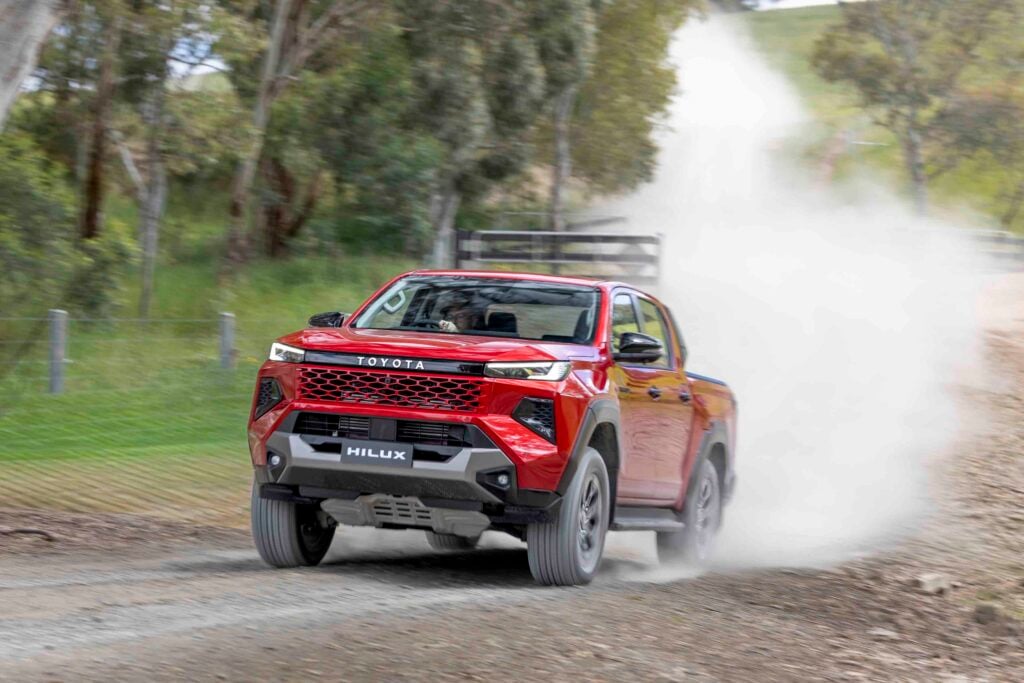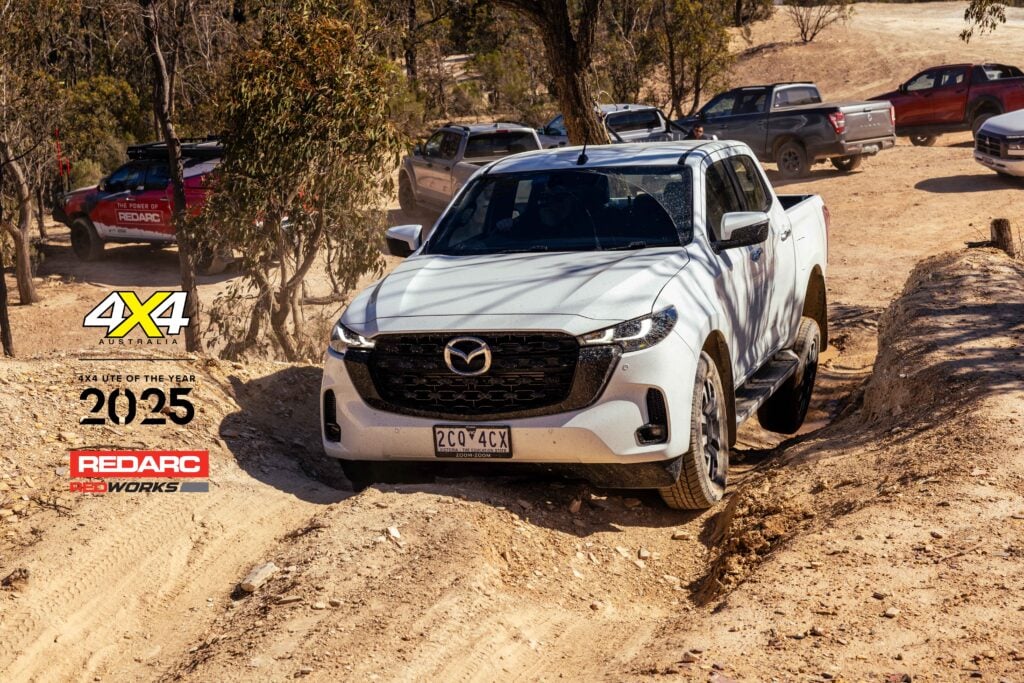Things we like
- Spacious cabin and tub
- Well-sorted dynamics
- Low purchase price
Not so much
- Confusing interior layout
- Old-feeling traction control
- Inability to remove cargo tub
LDV’s new Terron 9 ute shares little – if anything – with the brand’s ageing T60.
It rides on a new chassis, wears new bodywork, and is powered by a new engine – all of which is good news. It retains a body-on-frame platform with a double-cab layout and ute tub, but uniquely, the body and tub are a single moulded piece.
The bodysides are made from a single stamping that runs from the firewall to the bedsides, meaning the cargo tub can’t simply be removed to fit a tray or service body. While that could be a deal-breaker for some buyers, LDV says the integrated design results in a more rigid structure, delivering SUV-like stiffness and improved dynamics.
The Terron’s body is wider than the T60 – and wider than most other utes in the midsize segment – reflecting a growing trend towards larger cabins that sit somewhere between traditional midsize utes and full-size American pickups. It’s a direction particularly evident among newer Chinese ute manufacturers.
The Terron 9 will eventually be offered in two grades, but for now there’s just the entry-level Terron 9 Origin, priced from $50,990 drive-away for ABN holders. The higher-spec Evolve model is due later this year, starting from $55,990.
JUMP AHEAD
- Power and performance
- Cabin comfort and convenience
- Comprehensive safety kit
- Warranty and servicing
- Final verdict
- Specs
Power and performance
Both Terron 9 models are powered by a 2.5-litre single-turbo diesel engine, producing a claimed 163kW and 520Nm. It’s paired with an eight-speed automatic transmission and a part-time dual-range 4×4 system.
This is a completely different engine to the often laggy 2.0-litre bi-turbo diesel used in the T60 – and it shows. There’s no noticeable lag in the way it drives. While the 2.5’s claimed outputs are among the best in class, it doesn’t feel quite as sprightly as Ford’s 500Nm 2.0-litre bi-turbo.
That’s not to say the Terron is a slouch. It gets along well and feels competitive with the best in class when it comes to performance and cabin refinement. The engine delivers power smoothly and progressively, and the auto shifts cleanly. Gear selection is handled via a column-mounted stalk on the right of the steering wheel, with shift paddles positioned behind it. Our test vehicle was carrying a light load of around 150kg in the tub. The handling and dynamics are particularly well sorted, allowing for spirited yet composed driving on the sealed test track.
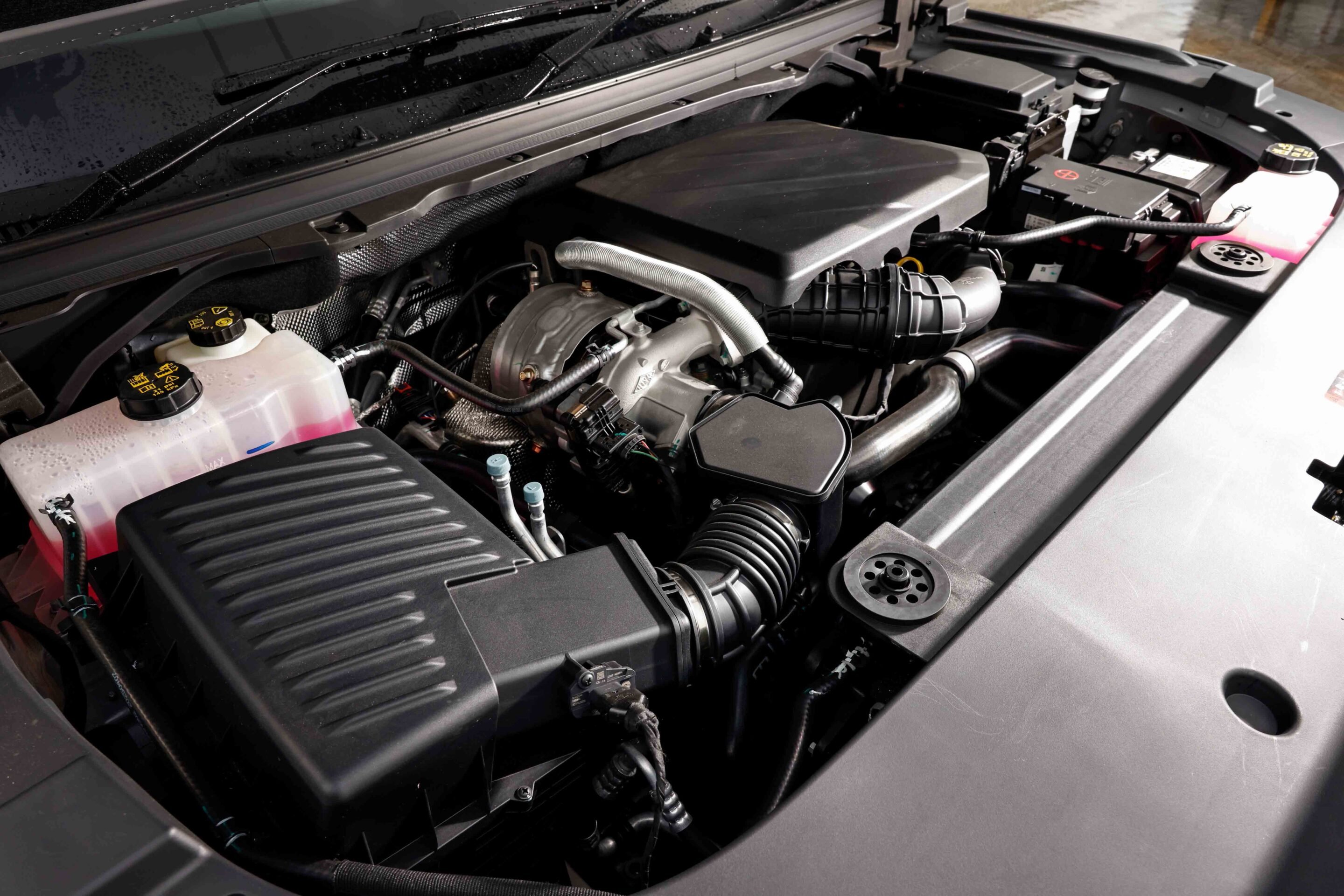
Our test of the Terron 9 took place at the former Holden proving ground, where we sampled it across a range of surfaces – from sealed roads to bush tracks and purpose-built off-road obstacles. The electronic traction control gets the job done, but it feels like an older-generation system – a little slow to react and noisy in operation. The rear diff lock provided extra traction, but it also seemed to disable ETC on the front axle, leaving minimal drive up front. The front and rear locking differentials fitted to the upcoming Evolve model will be a welcome upgrade.
Strangely, the 4×4 controls are isolated on the tall centre console – prominent and easy to access, but it feels like more frequently used functions could have been placed there instead. Adding to the odd layout, there are physical buttons only for drive modes, low-range selection and the rear diff lock. If you want to engage high-range 4×4, you have to dig through the multimedia screen menus to find it – odd and not very convenient.
The mono-leaf rear suspension allows for decent articulation at the back, making it easier to crawl over obstacles. Ground clearance didn’t pose any issues during our limited off-road drive. However, the shallow 550mm wading depth is something prospective owners will need to consider before diving into water crossings.
| Off-road specs | |
|---|---|
| Approach angle | 29 |
| Rampover angle | 20 |
| Departure angle | 25 |
| Ground clearance | 220mm |
| Wading depth | 550mm |
Cabin comfort and convenience
Aside from the oddly positioned 4×4 controls, the rest of the interior is simple, well laid out and user-friendly.
It features a pair of 12.3-inch digital displays – one for the multimedia system and one for the driver – along with both wired and wireless Apple CarPlay and Android Auto. Standard kit includes a four-speaker audio system, six-way power-adjustable driver’s seat, height- and reach-adjustable steering column, two USB-A ports, two USB-C ports and a single 12V power outlet.
The tall centre console takes a bit of getting used to and does partially obstruct access to the cup holders – especially if you’re the type who likes to sip coffee on the move. It’s good to see physical buttons for the HVAC controls, but it’s odd that there are separate fan speed up and down buttons… separated by the hazard light switch. A single, two-way switch would have been a more logical – and ergonomic – choice.
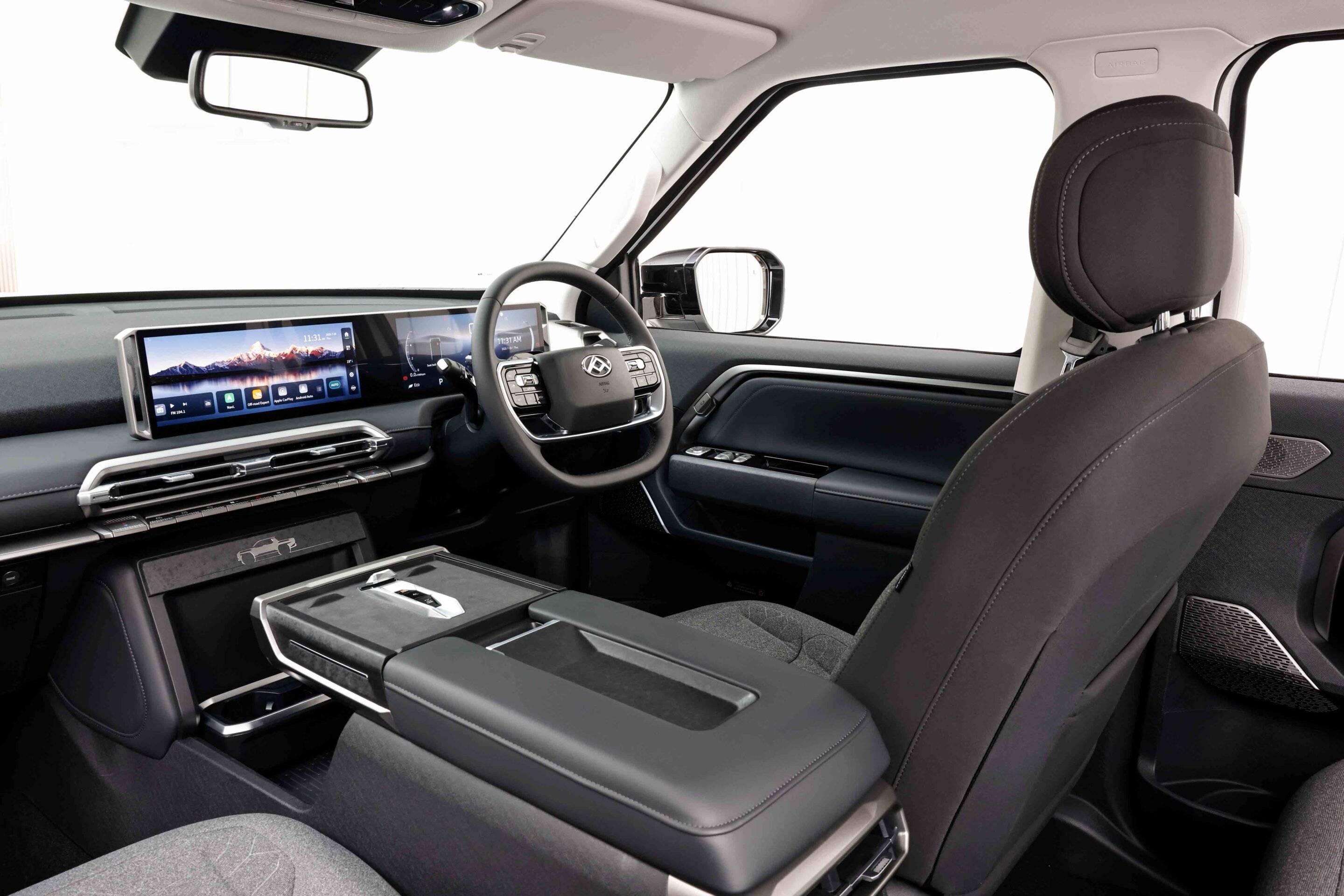
Audio volume is controlled via a roller dial on the steering wheel. In another quirky design choice, the door release is operated by a button rather than a lever – requiring two separate actions for something that’s usually done with one. The tailgate is also released via a button, and it lowers smoothly and features an assisted lift for easy closing.
The Origin model comes with cloth-trimmed seats, while the upcoming Evolve variant will offer a leather-look option. LDV says one benefit of the one-piece side pressing is the elimination of the usual gap between the cabin and cargo tub found in conventional utes, allowing for increased interior space. There’s certainly plenty of room up front, but in our standard test position behind the driver’s seat, rear legroom felt on par with other midsize dual-cabs.
The Evolve model will add a number of premium features over the Origin, including a JBL eight-speaker audio system, eight-way electric front seat adjustment, heated and ventilated front seats with massage function, and heated rear seats. It also scores 20-inch alloy wheels with 275/55R20 tyres, front and rear differential locks, trailer back-up assistance, auto-folding mirrors, ambient interior lighting, cargo bed lighting and integrated cargo rails.
Comprehensive safety kit
The Terron 9 comes well-equipped with a comprehensive suite of safety features.
This includes driver and front passenger airbags, side airbags for both front occupants, curtain airbags for front and rear rows, and a centre airbag between the front seats. There’s a 360-degree camera system, ISOFIX mounting points on the rear outboard seats, and two top-tether child restraint anchor points – though no centre mount.
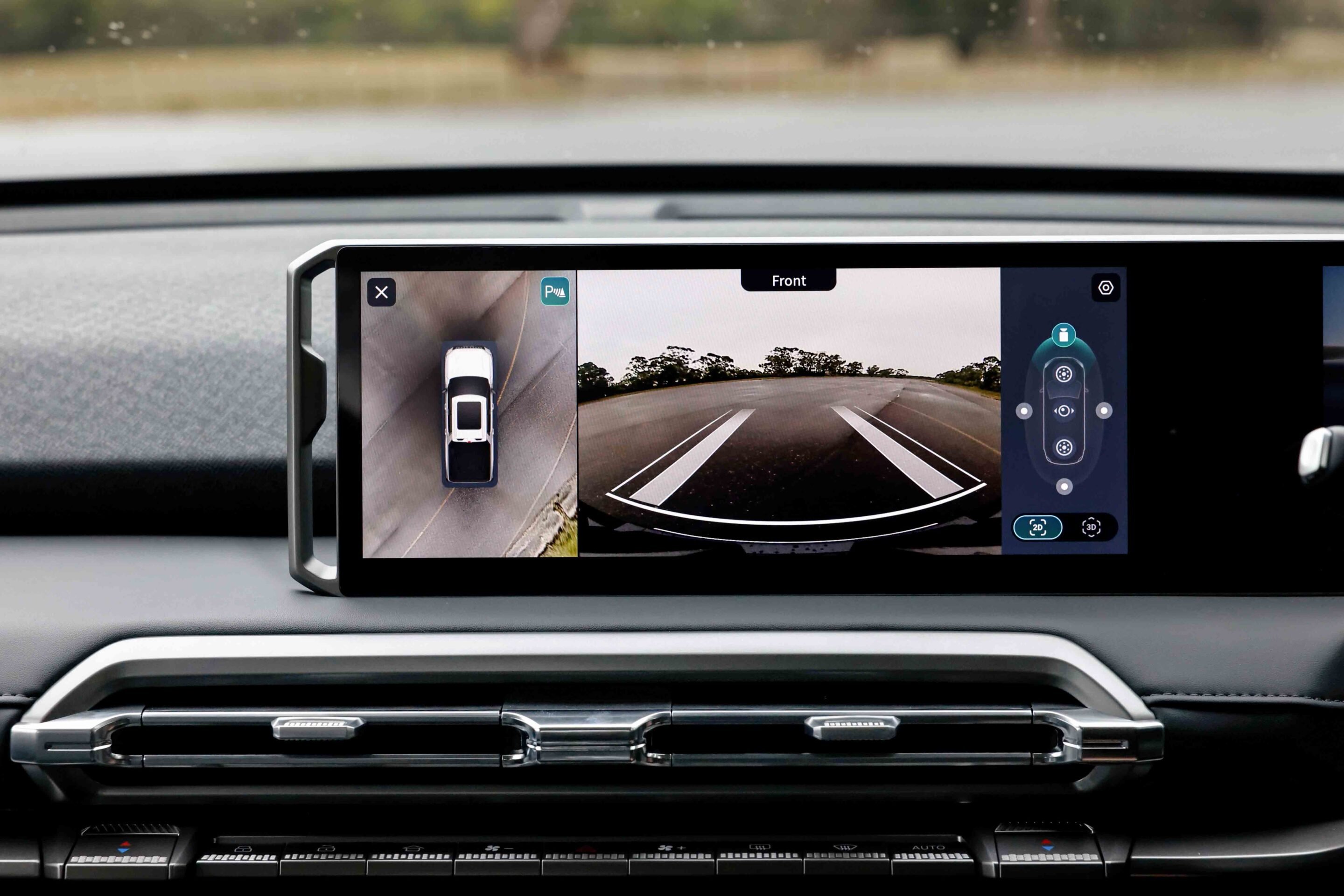
Active safety tech includes anti-lock brakes with electronic stability control, autonomous emergency braking (AEB) with pedestrian and cyclist detection, forward collision warning, lane departure warning, lane keeping assist, traffic sign recognition, a driver attention monitor, adaptive cruise control, rear cross-traffic alert, blind zone warning and a door exit warning. Also standard are front and rear parking sensors, tyre pressure monitoring, LED daytime running lights, bi-LED headlights, automatic headlights, rain-sensing wipers and four-wheel disc brakes.
Like many new vehicles – particularly those from Chinese brands – the Terron’s ADAS systems can be intrusive both on-road and off. While you can turn them off, it requires diving into the multimedia screen and switching them off one by one. Annoyingly, they reactivate each time you cycle the ignition, so you have to repeat the process every time you restart the vehicle.
Warranty and servicing details
The Terron 9 is backed by a seven-year/200,000km warranty (whichever comes first). The first service is due at 12 months or 10,000km, followed by regular service intervals of every 12 months or 15,000km.
Final verdict
We only had a morning behind the wheel of the Terron 9 Origin, but came away impressed with the fundamentals – strong performance, solid dynamics and decent refinement.
That said, some of the switchgear and interior layout choices left us scratching our heads. We’re keen for more seat time in the new LDV, particularly in the front- and rear-locked Evolve model – though we’re not quite sure where they’ll hide the button for the front locker.
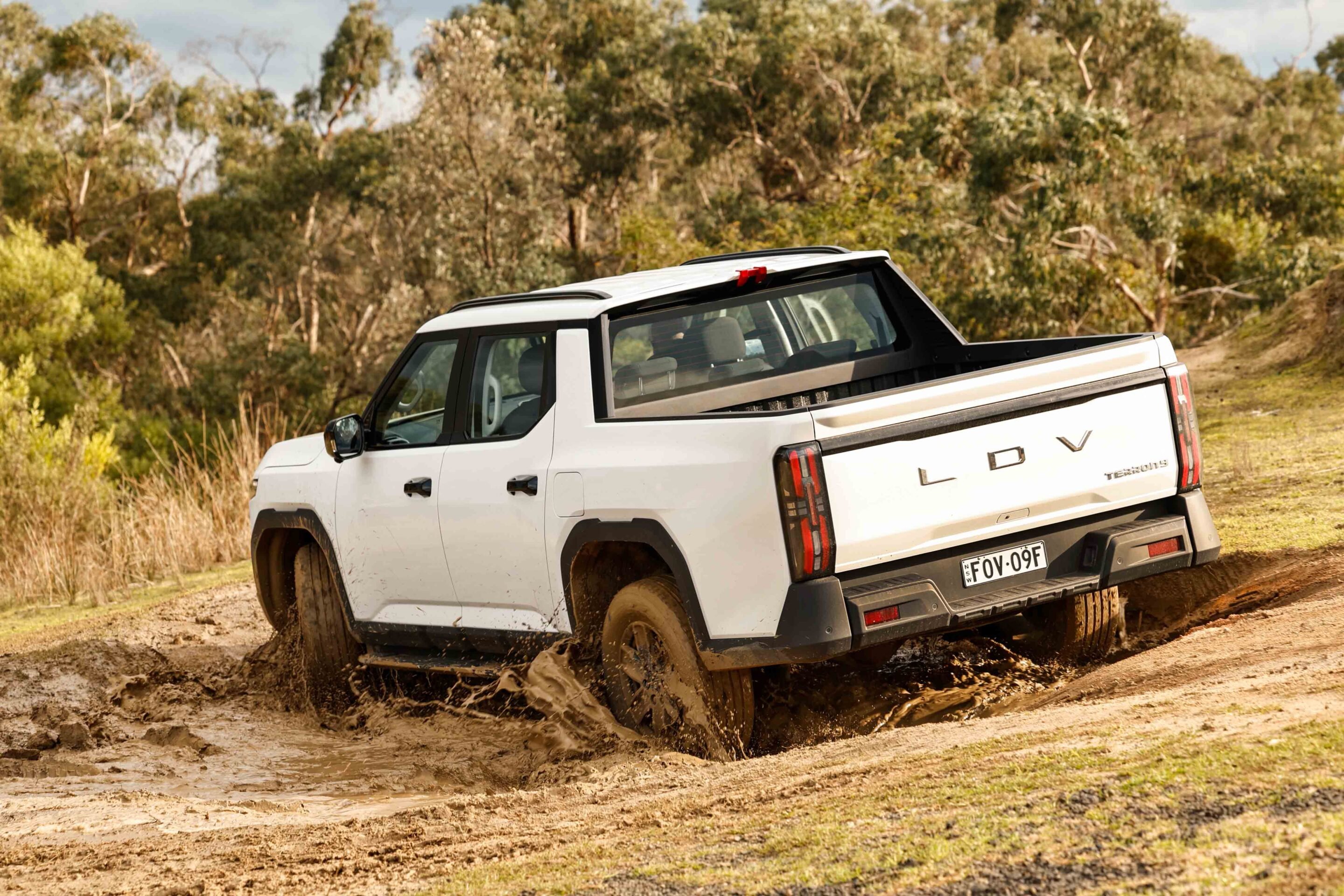
Specs
| 2025 LDV Terron 9 Origin | |
|---|---|
| Price | $50,990 drive away |
| Engine | I4 diesel |
| Capacity | 2.5L |
| Max power | 163kW @ 3800rpm |
| Max torque | 520Nm @ 1500-2500rpm |
| Transmission | 8-speed automatic |
| 4×4 system | Part-time/dual range 4×4 |
| Construction | 4-door ute body on ladder frame chassis |
| Front suspension | IFS with coil springs |
| Rear suspension | Live axle with monoleaf springs |
| Tyres | 265/65R18 on alloy wheels |
| Weight | 2495kg |
| GVM | 3500kg |
| GCM | 6500kg |
| Towing capacity | 3500kg |
| Payload | Up to 1100kg model dependant |
| Seats | 5 |
| Fuel tank | 80L |
| ADR fuel consumption | 7.9L/100km combined |
Things we like
- Spacious cabin and tub
- Well-sorted dynamics
- Low purchase price
Not so much
- Confusing interior layout
- Old-feeling traction control
- Inability to remove cargo tub
We recommend
-
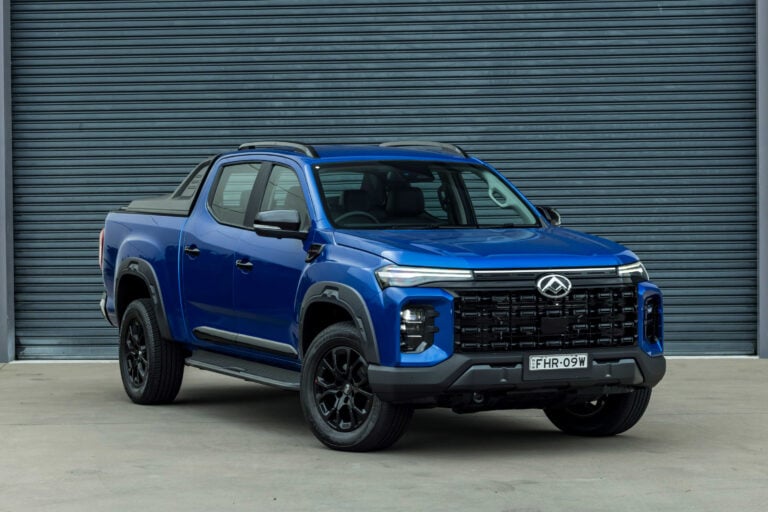 News
News2025 LDV T60: Towing capacity increased to 3500kg, more safety added, and manual models axed
Budget-friendly ute gets updated safety and higher towing capacity, but the price has risen as a result
-
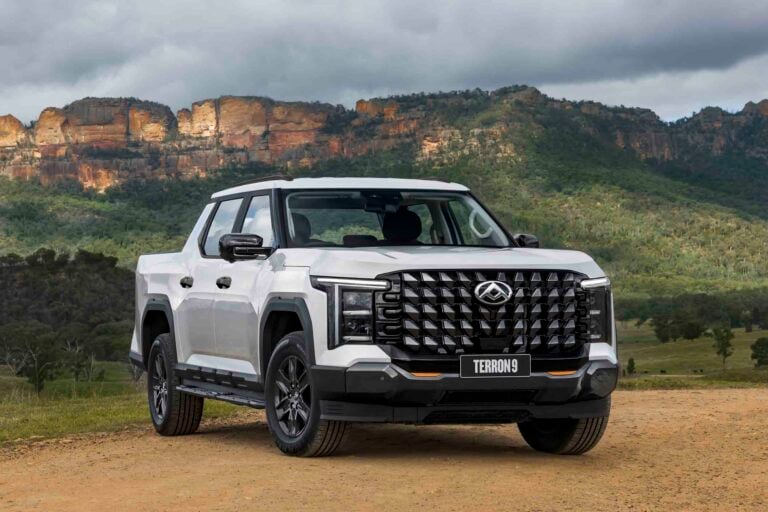 News
News2025 LDV Terron 9: Full pricing and specs announced for Australia
LDV’s new Terron 9 ute lands in Australia; expected in showrooms in July
-
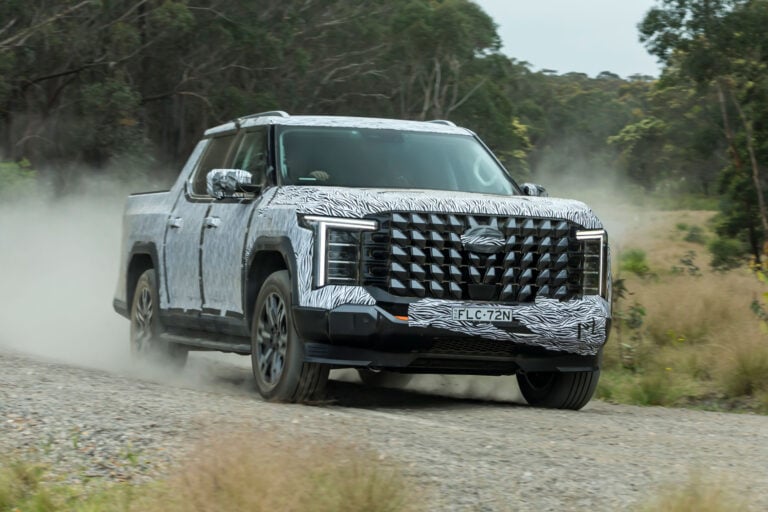 News
NewsLDV Terron9 testing in Australia ahead of 2025 launch
Following the news that the Terron9 pick up would be coming to Australia is confirmation that it has been testing in the country in both diesel and EV options.


